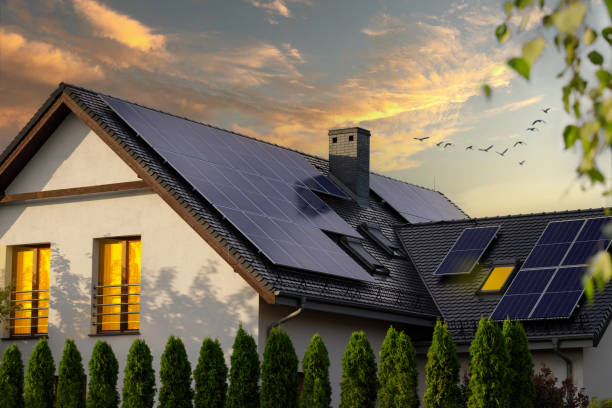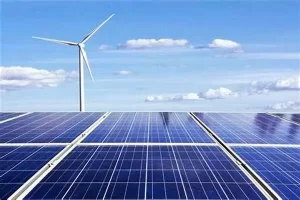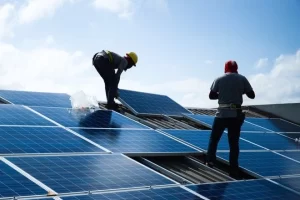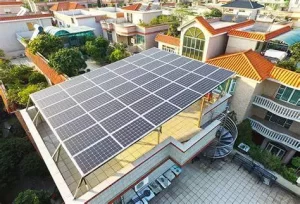The Benefits and Challenges of Home Solar Power Systems
In recent years, as the global pursuit of clean and sustainable energy intensifies, home solar power systems have emerged as a popular choice for many homeowners. These systems offer a range of benefits, but they also come with their fair share of challenges.

The Benefits
1. Energy Independence and Cost Savings
One of the most significant advantages of home solar power systems is the potential for energy independence. By generating your electricity on-site using solar panels, you reduce your reliance on the traditional power grid and the fluctuating energy prices associated with it. Over the long term, this can lead to substantial cost savings on your electricity bills.
For example, if a typical household installs a sufficient number of solar panels and a battery storage system, they can meet a large portion, if not all, of their daily energy needs directly from the sun. This means no more worrying about sudden price hikes in electricity or supply disruptions, providing a stable and predictable energy cost for the home.
2. Environmental Friendliness
Solar power is a clean, renewable energy source that produces no greenhouse gas emissions during operation. By choosing to install a home solar power system, you are taking a proactive step towards reducing your carbon footprint and combating climate change.
According to studies, a well-sized solar power system can offset the equivalent of several tons of carbon dioxide emissions each year, which is equivalent to planting a large number of trees or taking a significant number of cars off the road. This not only benefits the environment but also helps to create a healthier and more sustainable living environment for future generations.
3. Increased Property Value
Homes equipped with solar power systems often command a higher resale value in the real estate market. Prospective buyers are increasingly attracted to properties with sustainable and energy-efficient features, as they offer long-term savings and a reduced environmental impact.
In some cases, studies have shown that a solar power system can add thousands of dollars to the value of a home, making it a worthwhile investment not only in terms of energy savings but also in property appreciation.
4. Government Incentives and Rebates
To encourage the adoption of solar energy, many governments and local authorities offer various incentives and rebates for homeowners who install solar power systems. These can include tax credits, grants, and feed-in tariffs, which can significantly reduce the upfront cost of the solar installation and shorten the payback period.
For instance, in some countries, homeowners can receive a tax credit of up to 30% of the total cost of the solar power system installation. In addition, some utility companies offer feed-in tariffs that allow homeowners to sell excess electricity back to the grid at a premium rate, providing an additional source of income.
The Challenges
1. High Initial Investment
One of the primary barriers to widespread adoption of home solar power systems is the high upfront cost. Installing a solar panel system, including the panels, inverters, batteries (if applicable), and installation labor, can cost several thousand to tens of thousands of dollars, depending on the size and complexity of the system.
Although the long-term savings and potential return on investment can be substantial, the initial outlay can be a deterrent for many homeowners, especially those on a tight budget. However, as technology continues to advance and economies of scale come into play, the cost of solar panels and associated equipment is gradually decreasing, making solar power more accessible and affordable.
2. Space and Location Constraints
Another challenge is the space and location requirements for installing solar panels. To generate a significant amount of electricity, a sufficient number of solar panels need to be installed in an area with unobstructed access to sunlight. This can be a problem for homes with limited roof space, shading from nearby trees or buildings, or those located in areas with frequent cloudy or overcast weather conditions.
In addition, the orientation and tilt of the roof can also affect the efficiency of the solar panels. Homes with roofs that are not ideally oriented towards the south (in the northern hemisphere) or north (in the southern hemisphere) may not be able to capture as much sunlight, resulting in lower energy production.
3. Battery Storage Limitations
While battery storage systems can help store excess solar energy for use during the night or on cloudy days, current battery technology still has some limitations. Batteries are expensive, have a limited lifespan, and their energy storage capacity may not be sufficient to meet all of a household’s energy needs during extended periods of poor sunlight.
Furthermore, the disposal and recycling of used batteries pose environmental challenges that need to be addressed to ensure the sustainability of the entire solar power system.
4. Maintenance and Repair Costs
Like any other complex technological system, home solar power systems require regular maintenance and occasional repairs to ensure optimal performance and longevity. Solar panels need to be cleaned periodically to remove dirt, debris, and bird droppings, which can reduce their efficiency. Inverters and other components may also malfunction over time, requiring replacement or repair.
Although maintenance costs are generally relatively low compared to the savings in electricity bills, they still need to be factored into the overall cost of ownership. Additionally, finding qualified technicians for maintenance and repair services can be a challenge in some areas, especially in regions where solar installations are not yet widespread.
5. Intermittency and Grid Integration
Solar power generation is intermittent, depending on the availability of sunlight. This can pose challenges for the stability and reliability of the power grid when a large number of homes are relying on solar energy. To address this issue, effective grid integration strategies and energy storage solutions need to be developed to ensure a smooth transition to a more decentralized and renewable energy-based power system.
In conclusion, home solar power systems offer numerous benefits in terms of energy independence, cost savings, environmental impact, and property value. However, they also come with challenges related to high upfront costs, space and location constraints, battery storage limitations, maintenance and repair, and grid integration. Despite these challenges, the continued growth and development of solar technology, along with supportive government policies and increasing public awareness, are likely to drive the wider adoption of home solar power systems in the coming years, contributing to a more sustainable and clean energy future.
Contact us
- Email:[email protected]
- Tel: +86 13651638099
- Address: 333 Fengcun Road, Fengxian District, Shanghai
Get A Quote Now!

Read more

Unveiling Photovoltaic+Energy Storage: Four Major Application Scenarios Leading the Future of Energy
In this way, the energy landscape is evolving, and one of the most thrilling developments in renewables is the integration of photovoltaics energy storage.

From Theory to Practice: Four Methods for Estimating Photovoltaic Power Generation
Photovoltaic power generation has become an essential part of modern energy solutions, particularly in home solar systems and distributed power applications

Rack-Mounted Lithium Iron Batteries: Creating Efficient and Reliable Energy Storage Solutions
When it comes to modern energy solutions, rack-mounted lithium iron batteries are taking center stage in a variety of industries. Whether you’re powering data centers, stabilizing energy for households, or keeping critical systems online at 5G base stations, these batteries have become the unsung heroes of our electrified world.

Late Night Energy Saving Tips: How to Maximize Electricity Savings During Off-Peak Hours
With rising energy costs, homeowners are increasingly exploring innovative ways to save on their electricity bills. One effective approach is utilizing off-peak hours—times when electricity rates are significantly lower due to reduced demand.
